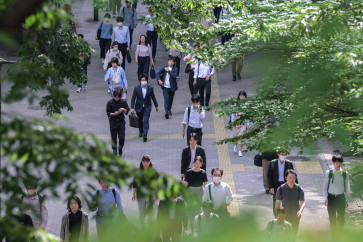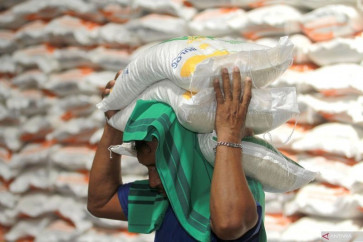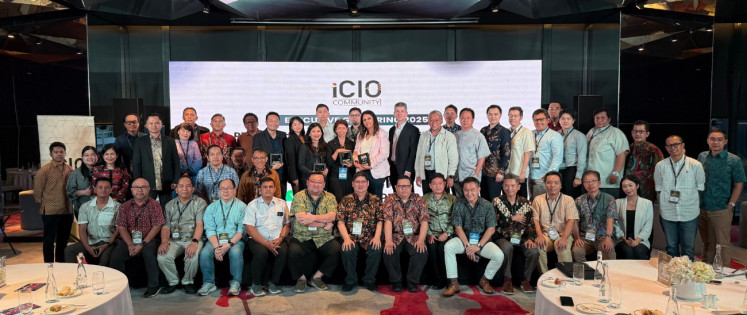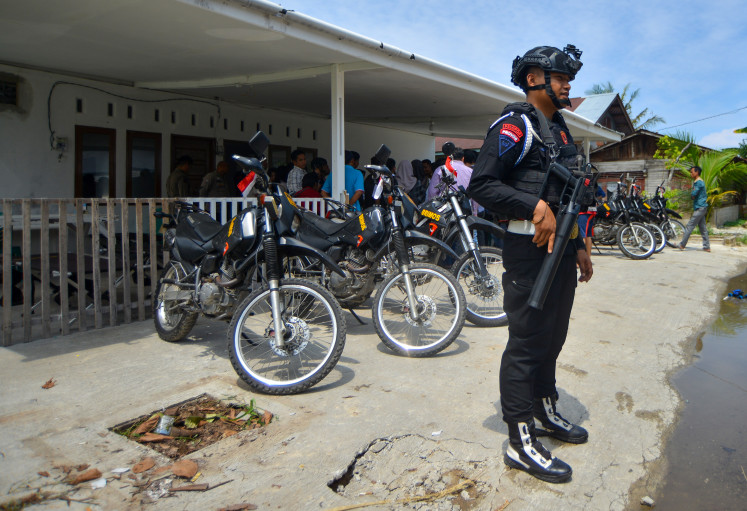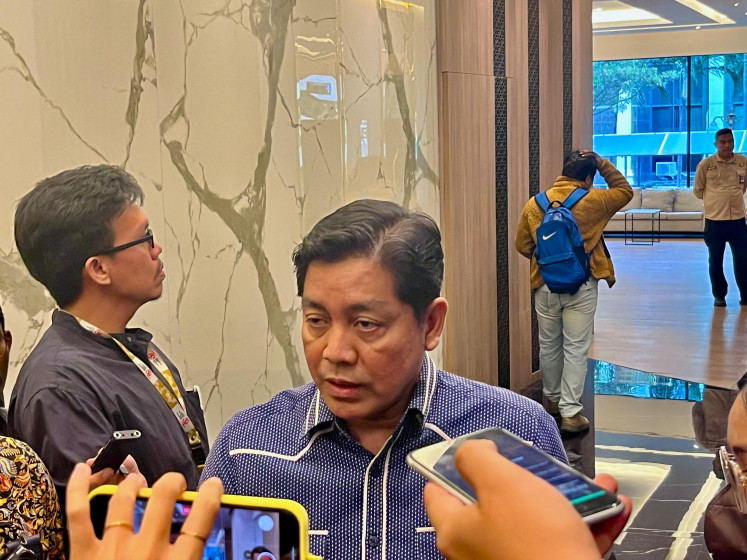Popular Reads
Top Results
Can't find what you're looking for?
View all search resultsPopular Reads
Top Results
Can't find what you're looking for?
View all search resultsS. Sudjojono and his national legacy
Sultan Agung dalam Goresan S. Sudjojono (Sultan Agung in the Strokes of S. Sudjojono), a book depicting the research and early process of one of Indonesia’s most celebrated paintings, was launched via a hybrid event on Saturday.
Change text size
Gift Premium Articles
to Anyone
S
ultan Agung dalam Goresan S. Sudjojono (Sultan Agung in the Strokes of S. Sudjojono), a book depicting the research and early process of one of Indonesia’s most celebrated paintings, was launched via a hybrid event on Saturday. The 138-page book was published in hardcover and softcover formats by the Popular Gramedia Library in collaboration with the Tumurun Museum and the S. Sudjojono Center.
The launch was held in the Tumurun Museum in Surakarta, Central Java, while the painting in question, Sejarah Perjuangan Sultan Agung (Behind the Struggle of Sultan Agung), was being kept in the Jakarta History Museum. It was attended by 300 people from all over Indonesia and more from neighboring countries Singapore and Malaysia.
Established in 2018, the Tumurum Museum showcases contemporary Indonesian artists, among other things. The book launch is part of an ongoing exhibition called Mukti Negeriku (My Prosperous Country), which will be open until late February. The event featured a video of Coordinating Economic Affairs Minister Airlangga Hartarto speaking at the opening of the exhibit back in August 2021, in which he noted that even though it was difficult to organize something like this during a pandemic, it was important to highlight the work of Indonesian artists.
The event itself was kicked off with a few words from Gibran Rakabuming Raka, the mayor of Surakarta, who described Sultan Agung as “a national hero on how he stood up to invaders”. Therefore, he added, the artwork of Sudjojono was important for all Indonesians.
The contents of the book were explained by Iwan K. Lukiminto, owner of the Tumurum Museum. In addition to the size of the painting, Iwan admired the fact that the painter, or pak Jon as he was nicknamed, also used the background to detail the historic activities of the people, from their traditional clothes and heirloom objects to traditional Mataram banners, as well as the Sultan’s mannerisms and characteristics, bringing to life the world they lived in in the 1600s.
The painting itself was commissioned in 1973 by Ali Sadikin, then-Jakarta governor, for the inauguration of the Jakarta History Museum. The new book includes correspondents between the former governor and the artist, as well as the research process and artistic decisions that were influenced by the letters. Sudjojono ended up with three panels; one that shows the greatness of Sultan Agung, the battle of Mataram against the Dutch and one featuring Jan Pieterszoo Coen, an officer of the Dutch East India Company (VOC) who was instrumental in bringing Indonesia under the colonial rule of the Netherlands.
“The painting is a masterpiece because of the research, the details, the passion of Sudjojono; not just because of the size,” said Jusuf Wanadi, a board member of the museum, adding that it should be upheld as a national heritage object.
The event was followed by a conversation between Santy Saptari, a book editor and exhibition curator, Bondan Kanumoyoso of the University of Indonesia (UI) and Pustanto, head of the Indonesian National gallery. Over Zoom, attendees also heard from Syed Muhammad Hafiz, book contributor and PhD candidate at National University of Singapore, and curatorial fellow at the Malay Heritage Center.
“Not a lot of people would attack Batavia, the capital for the Dutch, let alone twice,” said Bondan when asked about what set Sultan Agung apart from other national heroes. “He advanced, while others only defended their area.”
“What was fought for by Sultan Agung was more or less similar to what Sukarno was fighting for as a vision for the Indonesian nation,” he replied when moderator Daniel Komala further asked who he was most similar to.
He assured that Sudjojono was not a politician; he was simply an artist who loved his country with the way he captured the spirit of Indonesia when he depicted national heroes through his art.
Daniel also asked Santy Saptari on how to make the painter and artwork more appealing to the younger generation, at one point trying to compare Sultan Agung to a comic book character from the Marvel Cinematic Universe.
“I’d use social media, such as Instagram and Tik Tok for sure,” Santy said, noting the dynamic and interactive nature of the media posted on the platforms rather than introducing them through a book.
Pustanto also provided insights on how to register artwork as national heritage objects, such as all the necessary steps needed to get national agencies to consider the artwork.
The findings and analyses of Sudjojono’s paintings and 38 sketches, which are included in the book, will likely be used to register them as national cultural heritage objects in accordance with Law No. 11/ 2010 concerning cultural conservation. Syed was asked to compare the process of registering artwork as a national heritage object in Singapore, and whether it was similar to Indonesia’s process.
At the end of the conversation, Daniel asked each speaker to describe Sudjojono in one word.
Sakti replied with “visionary”, Bondan chose “warrior” as he was committed to his nation, while Pustanto said he was “ahead of his time”. The moderator himself described the painter as a “romantic”. The event was then closed with a rendition of the national song, “Indonesia Pusaka” (Indonesian Heritage) by Rose Pandawangi, esteemed singer and the painter’s widow.
Another event was held on Sunday: a workshop for local artists hosted by Jevi Alba, a sketch artist from a painting community in Surakarta. This workshop was a collaboration with Bentara Budaya Jakarta (BBJ) and Kompas Gramedia.


